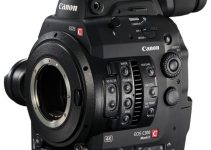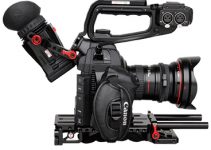One thing is for sure, shooting in S-Log2 (or utilising any other variation of Log gamma curve) is possibly the most efficient way to take advantage of the full dynamic range your camera sensor can capture. One of the downsides, however, is the extra amount of work you need to do in post to properly colour correct and colour grade your footage. Fortunately, some practical tips and tricks can help you to enhance the process and decrease the time you need to spend on this workflow.
Ahead in the video below, Casey Faris shares some helpful tips for colour grading footage shot in S-Log2. He covers setting contrast, black and white levels, adjusting colour casts, adding saturation, and more. Faris will also showcase the new Renegade LUTs from Ground Control that are specially designed for S-Log2.
Probably the first thing you need to do when colour grading S-Log footage is balancing the shadows and highlights of your clip. Using the RGB Parade Scope will give you a visual representation and better control over the image. First, look for those parts of the clip that need to be purely black or as close as possible to this hue.
Then, by rolling down the Lift a little bit, try to balance the image accordingly. Further, use the Lift wheel to adjust and balance the three primary colours and push them as close as possible to the bottom of the RGB Parade.
To adjust the highlights, use the same approach, but this time, modify the Gain control. If your image becomes too bright or too dark after making the initial changes, you can also try to tweak the Gamma controls. Finally, pump up the Saturation to the point where colours look natural.
Further, if you want to increase the saturation even more, just create a new Node and use its saturation control. The most important takeaway is that you need to approach every shot individually, applying the necessary settings and adjustments one at a time. Applying a LUT to all your shots of a particular sequence probably would be an excellent starting point, but don’t expect that this approach will substitute the actual grading process.
As we can see from the video above, Casey showcases his workflow when dealing with multiple shots that have different issues. So, even when you want to save some time and effort by using LUTs, you will still need to go through all the necessary colour grading tweaks. The best decision probably would be to have a set of multiple LUTs for various occasions and apply those accordingly.
At last but not least, remember that a LUT can’t colour grade your footage instantly, it can just give you a decent starting point to continue with your tweaks and colour adjustments further. Below, you’ll find some popular cameras in Sony’s lineup that support S-Log2 and/S-Log3 gamma curve as a built-in feature. Make sure that you also check out the new Renegade LUTs from Ground Control where you can download and play around with some of the free LUTs available there.
[source: Casey Faris]
B&H Order Links:
Sony Alpha a7S Mirrorless Digital Camera
Sony Alpha a7S II Mirrorless Digital Camera (Body Only)
Sony Alpha a7R II Mirrorless Digital Camera (Body Only)
Sony PXW-FS5 XDCAM Super 35 Camera System
Sony PXW-FS7 XDCAM Super 35 Camera System
Disclaimer: As an Amazon Associate partner and participant in B&H and Adorama Affiliate programmes, we earn a small comission from each purchase made through the affiliate links listed above at no additional cost to you.




